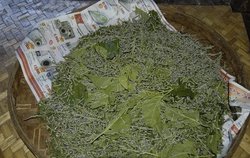Silkworm
|
|
| Silkworm | ||||||||||||||
|---|---|---|---|---|---|---|---|---|---|---|---|---|---|---|
 Prometheus silkworm | ||||||||||||||
| Scientific classification | ||||||||||||||
| ||||||||||||||
| Binomial name | ||||||||||||||
| Bombyx mori Linnaeus, 1758 |
The silkworm (Bombyx mori, lit. "raw silk of mulberry") is the larva of a moth that is very important economically as the producer of silk. A silkworm's diet consists solely of mulberry leaves. It is native to northern China.
The silkworm is so called because it spins its cocoon from raw silk. The cocoon is made of a single continuous thread of raw silk from 300 to 900 meters (1000 to 3000 feet) long.
Silkworms have a good appetite. They eat mulberry leaves day and night continuously. Thus, they grow very fast. When the color of their heads turn darker, it means that it is time for them to moult. After they moult about four times, their bodies turn slightly yellow and their skin becomes tighter, which means they are going to cover themselves with a silky cocoon. If the caterpillar is left to eat its way out of the cocoon naturally, the threads will be cut short and the silk will be useless, so silkworm cocoons are thrown into boiling water, which kills the silkworms and also makes the cocoons easier to unravel. The silkworm itself is often eaten.

The adult moth has been bred for silk production and cannot fly. It is also called the silkworm-moth or mulberry silkworm. Because of its long history and economic importance, the silkworm genome has been the object of considerable modern study.
History
In China, there is a legend that the discovery of the silkworm's silk was by an ancient empress called Lei Zu. She was walking around when she noticed the worms. She used her finger to touch it, and wonder of wonders, a strand of silk came out! As more came out and wrapped around her finger, she slowly felt a warm sensation. When the silk ran out, she saw a small cocoon. In an instant, she realized that this cocoon was the source of the silk. She taught this to the people and it became widespread.There are many more legends about the silkworm.
Medical uses
Silkworm is the source of the traditional Chinese medicine. It is the dried body of the 4–5th stage larva which has died of the white muscadine disease caused by the infection of the fungus Beauveria bassiana. Its uses are to dispel wind, dissolve phlegm and relieve spasm.
